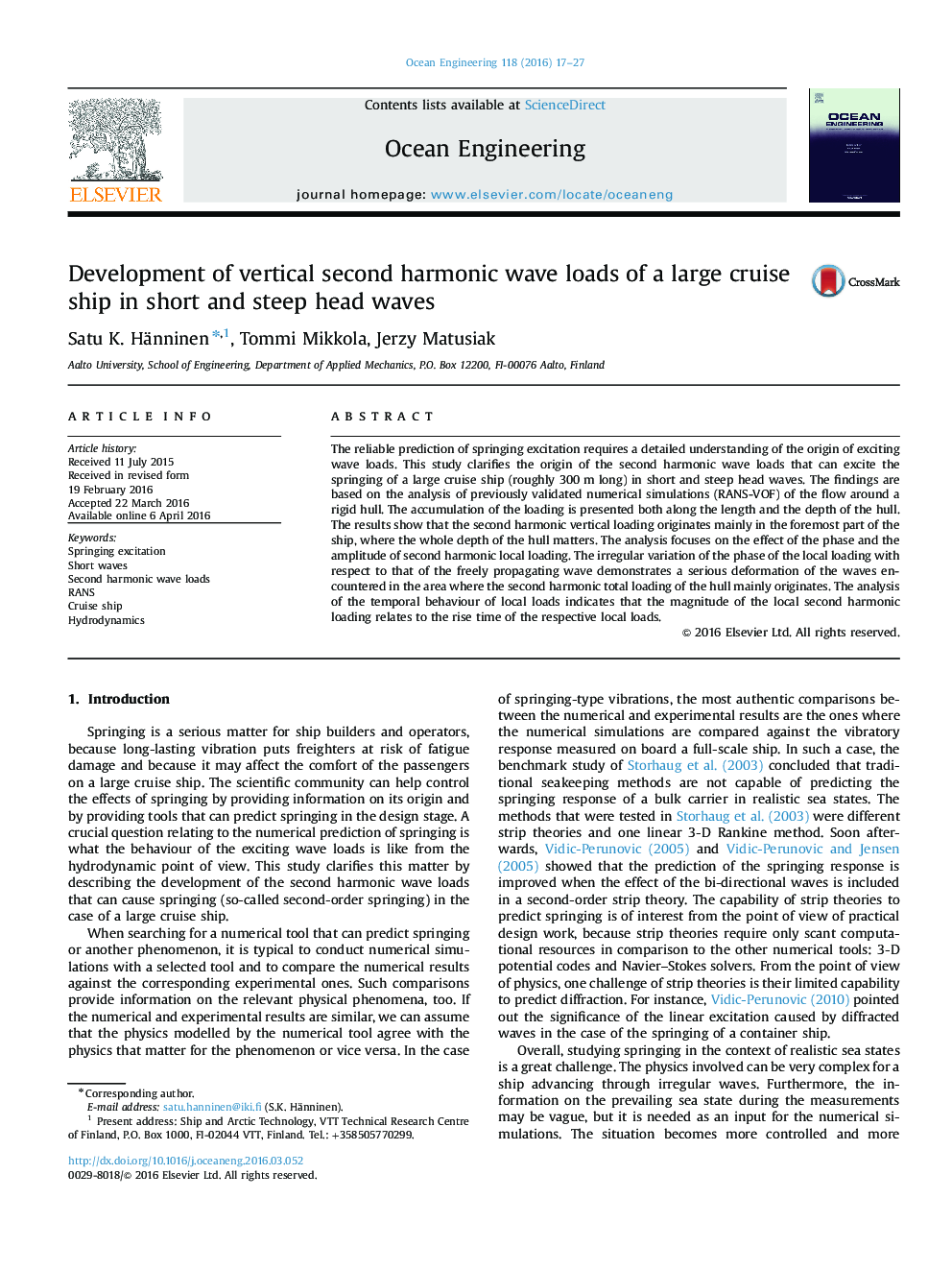| Article ID | Journal | Published Year | Pages | File Type |
|---|---|---|---|---|
| 1725070 | Ocean Engineering | 2016 | 11 Pages |
•We explain the development of second harmonic vertical load of a large cruise ship.•The foremost part of the ship with its whole depth matters.•Irregular variations of the phase and the amplitude of local loads along the length of the hull are key factors.•The magnitude of the local second harmonic load relates to the rise time of the respective load.
The reliable prediction of springing excitation requires a detailed understanding of the origin of exciting wave loads. This study clarifies the origin of the second harmonic wave loads that can excite the springing of a large cruise ship (roughly 300 m long) in short and steep head waves. The findings are based on the analysis of previously validated numerical simulations (RANS-VOF) of the flow around a rigid hull. The accumulation of the loading is presented both along the length and the depth of the hull. The results show that the second harmonic vertical loading originates mainly in the foremost part of the ship, where the whole depth of the hull matters. The analysis focuses on the effect of the phase and the amplitude of second harmonic local loading. The irregular variation of the phase of the local loading with respect to that of the freely propagating wave demonstrates a serious deformation of the waves encountered in the area where the second harmonic total loading of the hull mainly originates. The analysis of the temporal behaviour of local loads indicates that the magnitude of the local second harmonic loading relates to the rise time of the respective local loads.
